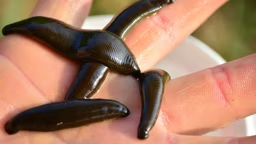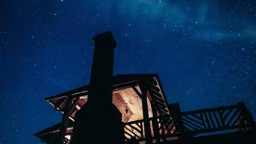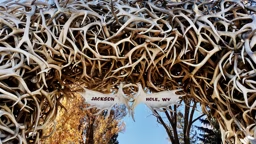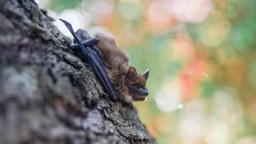Eastern and Midwestern Prairies & Meadows
These 10 plants are ideal butterfly attractors for gardens in the Midwest and eastern portions of the U.S.:
Butterflyweed, Asclepias tuberosa.
Not a weed at all, this well-behaved beauty is otherwise aptly named. Butterflies flock to its bright orange flowers in the heat of summer, and monarch caterpillars love to eat its leaves. Give it lots of sun in a loose, well-drained soil.
New England aster, Aster novae-angliae.
Covered with flowers that range from blue to lavender to pink, this is the king of the asters. A great late-season monarch butterfly magnet! Give it good soil in full sun for a great show. And it loves clay!
Purple coneflower, Echinacea purpurea.
This classic native plant is also one of the best for butterflies. The long bloom period of its sunny purple flowers assures a steady diet of nectar for its many visitors. Grows in full sun to light shade. Birds love the seeds too!
Sweet joe-pye weed, Eupatorium purpureum.
Butterflies find the delicate purple flowers of all the joe-pyes to be irresistible. This well-behaved denizen of woodland edges does great in full sun or light shade.
Meadow blazingstar, Liatris ligulistylis.
You want monarch butterflies? Plant this flower! The butterflies are drawn to the blooms in droves. It is rather short-lived and requires replanting every few years, but nothing else brings in the monarchs like it!
Bergamot, Monarda fistulosa.
The lovely lavender flowers attract a wide variety of winged wonders in mid-summer. Grows in almost any soil, in full sun to light shade. It creeps gradually by rhizomes, but if it is planted with other flowers, they tend to keep it at bay by competing with it.
Yellow coneflower, Ratibida pinnata.
The bright yellow flowers of this adaptable prairie plant are a butterfly favorite. It thrives in almost any soil when planted in full sun and blooms for an extended period of time during the dog days of August.
Ohio goldenrod, Solidago ohiensis.
The English love our goldenrods in their border gardens, because they know they don’t really cause hay fever (ragweed is the true culprit, as it blooms at the same time). Ohio goldenrod has one of the biggest and most bodacious flowers of all, and butterflies love it for a late season snack!
Hoary vervain, Verbena stricta.
Here’s a great plant for hot, dry places where other flowers struggle. It thrives in dry sand and gravel and blooms its head off with bright purple flowers in late summer. After the flowers are gone, birds come to eat the seeds!
Tall ironweed, Vernonia altissima.
This majestic plant sports brilliant reddish-lavender flowers that are as attractive to butterflies as they are to humans. This is a big boy, so give him rich soil and plenty of room to spread out. This is another natural bird feeder too!
One of the great joys of the cabin is watching wildlife in a natural environment. Butterflies provide endless hours of entertainment, if you’ve provided them with a nice place to visit.
Whether you plant them or just allow them to naturalize, many native wildflowers are powerful butterfly attractors – while also being an easy low-maintenance garden option for the cabin. Here are some of the most beautiful and best-behaved plants to attract butterflies to your yard.
Whether you plant them or just allow them to naturalize, many native wildflowers are powerful butterfly attractors – while also being an easy low-maintenance garden option for the cabin. Here are some of the most beautiful and best-behaved plants to attract butterflies to your yard.
Western Mountain Region
Panayoti Kelaidis of the Denver Botanic Garden recommends the following plants for attracting butterflies in the western United States:
Jones’ bluestar, Amsonia jonesii.
With ivory white flowers and fine foliage that turns bright yellow in fall, this native of the American Southwest is a great choice for dry western gardens. It is resistant to both deer and rabbits.
Spider milkweed or antelope horns, Asclepias asperula.
Notable for its spider-like clumps of long, thin leaves, the greenish-yellow flowers are tinged with maroon and resemble antelope horns. Extremely drought resistant, this Southwestern native is an important larval host plant for monarch and queen butterflies.
Narrow-leaf purple coneflower, Echinacea angustifolia.
While the Eastern purple coneflower requires regular watering in arid climates, its narrow-leaved cousin shines in dry conditions. Native to the Great Plains, it thrives where other coneflowers dare not tread.
Dainty daisy, Erigeron speciosus.
Showy blue flowers with yellow centers create a mid-summer sensation in the Western garden. Adaptable to a wide range of moisture conditions and elevations, it is also deer resistant.
Blanket flower, Gaillardia aristata.
Bright red and yellow flowers surrounding this compact plant make this one of the best native perennials for the dry butterfly garden. Very adaptable, it does best in dry soils with plenty of sun.
Scarlet gilia, Ipomopsis aggregate.
This widespread Western native thrives in dry sandy and rocky soils but performs beautifully in well-drained garden soil. The scarlet-red tubular flowers are not only utilized by butterflies, they are a hummingbird favorite as well.
Coyote mint, Monardella odoratissima.
Ornate purple or blue flowers make this low-growing, drought-resistant butterfly magnet a great garden plant. Native to the Great Basin and mountains of the western U.S., it thrives in dry soil at elevations of 3,500 to over 10,000 feet.
Spiny phlox, Phlox hoodii.
Native to the Great Plains and across the western U.S., this is the drought-resistant version of creeping phlox. It forms tight bunches of deep green foliage that are covered with pink to white flowers in late spring. It is visited by both butterflies and hummingbirds.
Mexican hat, Ratibida columnifera.
Brilliant yellow and often red flowers appear like miniature sombreros atop this Great Plains native. Extremely drought-tolerant, it thrives in a wide range of soils.
Blue sage, Salvia pachyphylla.
Native to the deserts and lower mountains of the Southwest, this semi-shrubby gem sports spires of showy blue and lavender flowers in mid- to late-summer atop 1- to 2-foot stems. Thriving in dry, rocky soils, it is one of the showiest of plants for attracting both butterflies and hummingbirds.
Neil Diboll is president of Prairie Nursery, Inc. of Westfield, Wis. He has 30 years of experience in designing ecological natural landscapes and propagating native wildflowers and ornamental grasses. .
Panayoti Kelaidis of the Denver Botanic Garden recommends the following plants for attracting butterflies in the western United States:
Jones’ bluestar, Amsonia jonesii.
With ivory white flowers and fine foliage that turns bright yellow in fall, this native of the American Southwest is a great choice for dry western gardens. It is resistant to both deer and rabbits.
Spider milkweed or antelope horns, Asclepias asperula.
Notable for its spider-like clumps of long, thin leaves, the greenish-yellow flowers are tinged with maroon and resemble antelope horns. Extremely drought resistant, this Southwestern native is an important larval host plant for monarch and queen butterflies.
Narrow-leaf purple coneflower, Echinacea angustifolia.
While the Eastern purple coneflower requires regular watering in arid climates, its narrow-leaved cousin shines in dry conditions. Native to the Great Plains, it thrives where other coneflowers dare not tread.
Dainty daisy, Erigeron speciosus.
Showy blue flowers with yellow centers create a mid-summer sensation in the Western garden. Adaptable to a wide range of moisture conditions and elevations, it is also deer resistant.
Blanket flower, Gaillardia aristata.
Bright red and yellow flowers surrounding this compact plant make this one of the best native perennials for the dry butterfly garden. Very adaptable, it does best in dry soils with plenty of sun.
Scarlet gilia, Ipomopsis aggregate.
This widespread Western native thrives in dry sandy and rocky soils but performs beautifully in well-drained garden soil. The scarlet-red tubular flowers are not only utilized by butterflies, they are a hummingbird favorite as well.
Coyote mint, Monardella odoratissima.
Ornate purple or blue flowers make this low-growing, drought-resistant butterfly magnet a great garden plant. Native to the Great Basin and mountains of the western U.S., it thrives in dry soil at elevations of 3,500 to over 10,000 feet.
Spiny phlox, Phlox hoodii.
Native to the Great Plains and across the western U.S., this is the drought-resistant version of creeping phlox. It forms tight bunches of deep green foliage that are covered with pink to white flowers in late spring. It is visited by both butterflies and hummingbirds.
Mexican hat, Ratibida columnifera.
Brilliant yellow and often red flowers appear like miniature sombreros atop this Great Plains native. Extremely drought-tolerant, it thrives in a wide range of soils.
Blue sage, Salvia pachyphylla.
Native to the deserts and lower mountains of the Southwest, this semi-shrubby gem sports spires of showy blue and lavender flowers in mid- to late-summer atop 1- to 2-foot stems. Thriving in dry, rocky soils, it is one of the showiest of plants for attracting both butterflies and hummingbirds.
Neil Diboll is president of Prairie Nursery, Inc. of Westfield, Wis. He has 30 years of experience in designing ecological natural landscapes and propagating native wildflowers and ornamental grasses. .
















